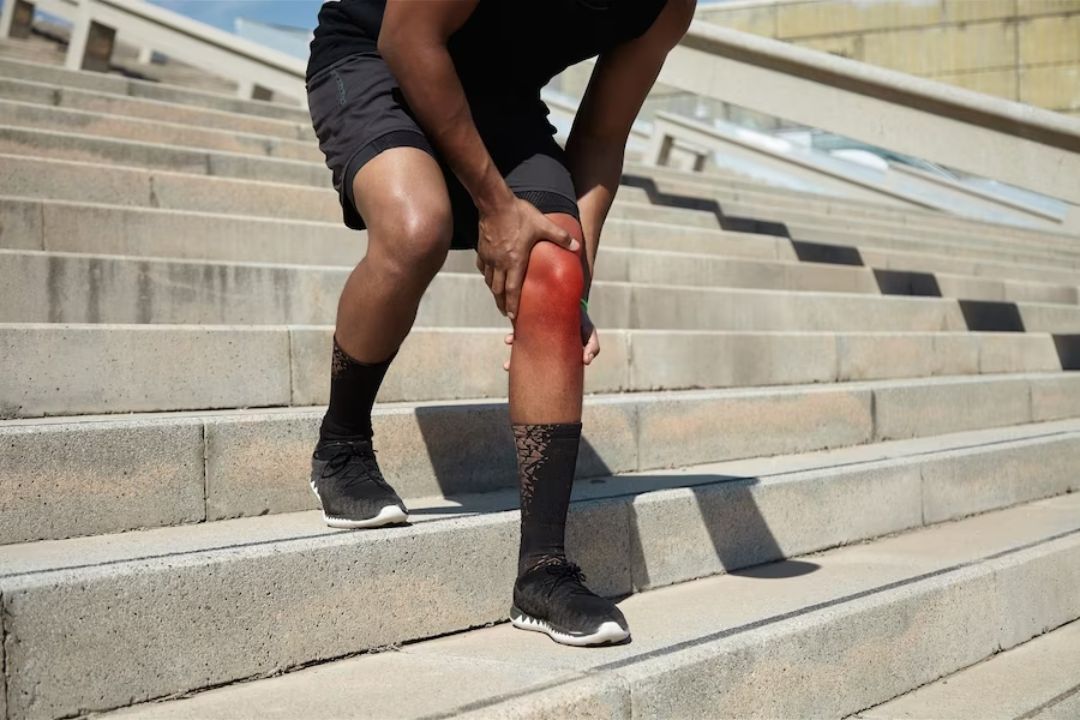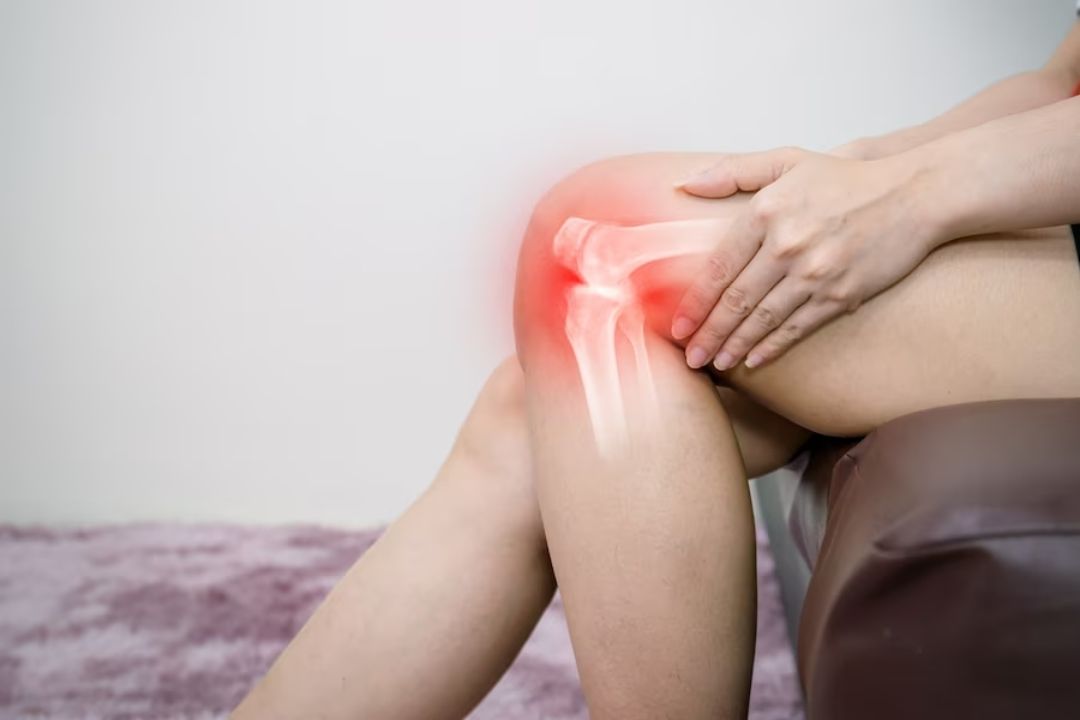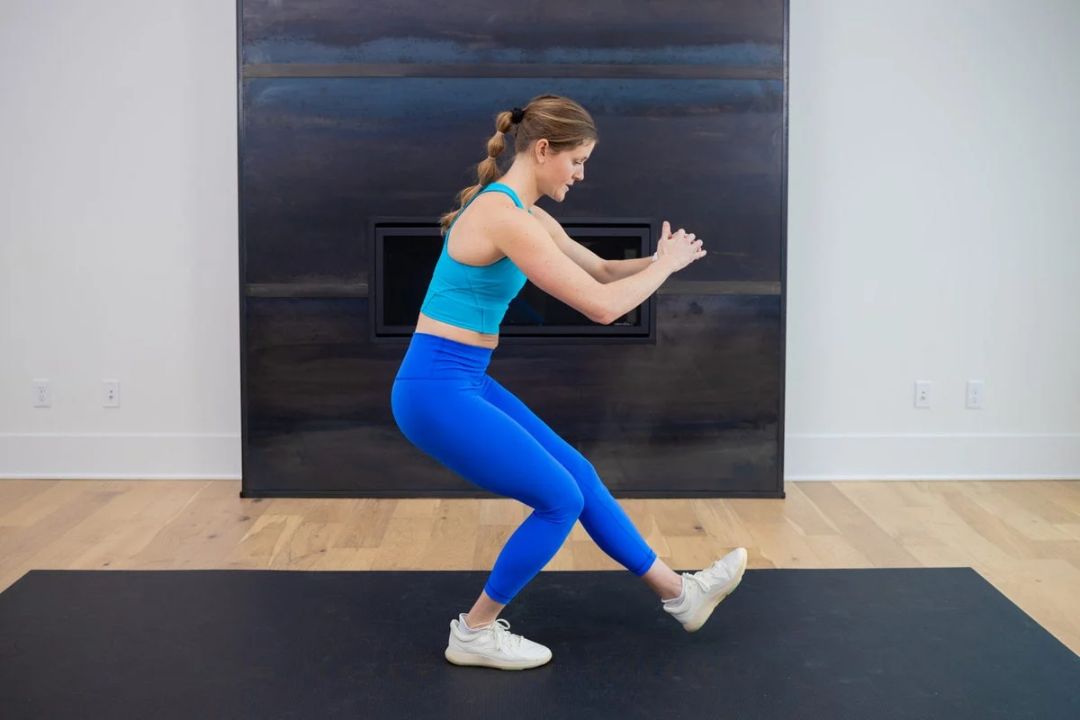If you’ve ever experienced a sharp, achy pain in your knee, it could be bursitis. Bursitis is an inflammation of the small fluid-filled pads or bursae, that act as cushions among your bones and the tendons and muscles near your joints.
Knee bursitis can cause discomfort and swelling, affecting your mobility and quality of life. It’s crucial to understand its causes, signs and ways to diagnose this condition to address it effectively.
Additionally, knowing the non-surgical interventions and surgical options available for treatment can provide relief and improve your daily activities. It doesn’t stop there – adopting a healthy lifestyle also plays a significant role in recovery and prevention.
Read on to gain insights into managing knee bursitis with more confidence.
Wondering what’s behind your bursitis knee? It could be anything from a hard hit to the joint, frequent kneeling, or even an infection that’s causing your knee to swell up. Your ‘knee pain symptoms checker’ may have indicated potential bursitis, but you’re not sure what caused it.
Well, here’s the scoop: whenever there’s consistent pressure on your knee or sharp knee pain after strenuous activity, it might lead to inflammation in the small fluid-filled sacs called bursae which protect and cushion your joints. This condition is known as bursitis. And suppose you’ve been experiencing anterior knee pain along with swelling and tenderness around the affected area. In that case, you should use a ‘knee pain symptom checker’ online before seeking medical advice for appropriate treatment options.
Imagine the strain on your joints if you’re constantly kneeling or engaging in activities that exert pressure on your knees, which can ignite a painful inflammation in the bursa – a fluid-filled sac that cushions these joints. This is known as bursitis knee.
Use a knee pain location chart to pinpoint discomfort accurately. If you’re experiencing knee pain when bending or at night, it could indicate causes of bursitis knee.
Now, let’s delve into the risk factors that can make you more prone to this pesky inflammation. Certain conditions or activities can elevate your risk for bursitis knee. You may experience knee pain when bending due to repetitive motions or overuse of the joint in sports or jobs requiring frequent kneeling.

Photo Credit: wayhomestudio, Freepik
If you’re feeling a sharp stabbing pain in your knee that comes and goes, it could be a sign of bursitis. Sometimes, you might notice pain on the inside of your knee with no swelling – another potential indicator. Pain when kneeling is also common among those at risk.
Lastly, if straightening your leg brings about discomfort in the knee area, don’t ignore it. It might be time to seek medical advice as this could suggest possible bursitis.
If you’re grappling with relentless discomfort in your joint area, it’s crucial to get to the root of the problem and a thorough medical evaluation might just be what you need. Your doctor will typically ask about your symptoms, such as knee pain when bending or kneeling, burning knee pain, pain behind the knee, and even pain inside the knee. They’ll also inquire about any recent injuries or activities that could have contributed to these symptoms.
Physical examination is another integral part of diagnosing bursitis. This usually involves palpating the affected area to check for swelling and tenderness. In some cases, imaging tests like X-rays or MRIs may be necessary to confirm your diagnosis and rule out other conditions that can cause similar symptoms.
With a definitive diagnosis, appropriate treatment can commence promptly.

Photo Credit: sompongtom, Freepik
Before you start worrying about surgery, it’s important to note that plenty of non-surgical interventions could relieve your joint discomfort. If you’re experiencing knee pain when bending or medial knee pain possibly indicating bursitis, these treatments may help:
Remember, recognizing ‘bursitis knee: signs, diagnosis and treatment’ early is key to managing this condition effectively with non-surgical interventions like these.
While non-invasive methods can offer substantial relief, surgical options are available for those with chronic or severe joint discomfort that don’t respond to other treatments.
If you’ve referred to an inner knee pain location chart and your symptoms align with bursitis, such as posterior knee pain or nerve pain in the knee, then surgery might be worth considering.
Surgical interventions primarily aim to remove the inflamed bursa. This is done when the inflammation becomes unbearable and causes significant pain inside your knee, particularly when bending. The procedure is typically outpatient and minimally invasive. However, it’s crucial to understand that like all surgeries, this too carries potential risks and complications.
Therefore, consult thoroughly with your healthcare provider before making a decision.
Maintaining a balanced lifestyle isn’t just beneficial for your overall health, it’s also key in recovering from joint discomfort and keeping future flare-ups at bay. If you’ve ever experienced knee pain when bending or pain in the back of your knee when straightening your leg, you understand how debilitating this can be.

Photo Credit: nourishmovelove
Incorporating a few simple habits can make all the difference:
Remember, these adjustments not only aid recovery but also prevent further issues. So take that step today towards better knee health!
Treatment for knee bursitis often involves rest, ice, and over-the-counter pain relievers. In some cases, a doctor may recommend physical therapy, corticosteroid injections, or even surgery.
Bursitis of the knee typically causes pain, swelling, and tenderness around the knee. You may also experience increased pain with movement or pressure.
While rest is important in the early stages of knee bursitis, gentle exercises like walking can be beneficial in the recovery process, helping to strengthen the muscles around the knee.
The healing time for knee bursitis can vary depending on the severity of the condition, but it typically takes a few weeks to several months with proper treatment.
Knee bursitis is a condition where the bursa, a fluid-filled sac that cushions the knee joint, becomes inflamed.
The symptoms of knee bursitis include pain, swelling, and tenderness over the affected bursa, which is usually located in the front of the knee.
Knee bursitis may be caused by repetitive motions that put pressure on the bursa, such as kneeling or frequent falls on the knee. Other causes include direct trauma or injury to the knee, infection of the bursa, or underlying conditions such as gout or rheumatoid arthritis.
Knee bursitis is usually diagnosed through a physical examination of the knee, where the doctor will look for signs of swelling, redness, and tenderness. In some cases, imaging tests such as X-rays or an MRI may be used to rule out other possible causes of knee pain.
The treatment for knee bursitis may include rest, ice packs, and over-the-counter pain medications to reduce pain and inflammation. In some cases, a doctor may recommend draining the excess fluid from the bursa or injecting a corticosteroid medication to alleviate symptoms. Physical therapy and exercises to strengthen the muscles around the knee may also be helpful in preventing future flare-ups.
Yes, knee bursitis can become infected, resulting in a condition called septic bursitis. This typically occurs when the bursa is injured or punctured, allowing bacteria to enter and cause an infection. Infected bursa may require antibiotic treatment.
The signs and symptoms of infected knee bursitis may include increased pain and swelling, warmth or redness over the affected area, and fever.